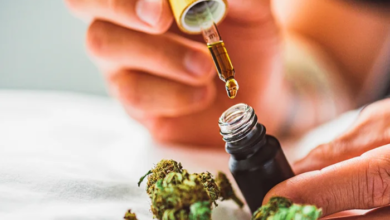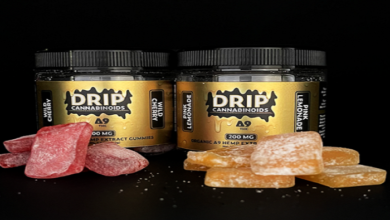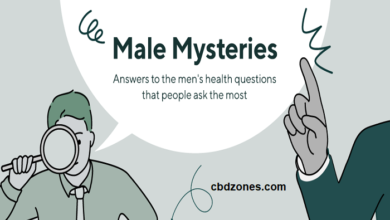Rodent Ulcer: A Common and Curable Skin Cancer

Rodent ulcer is an old-fashioned name for a type of skin cancer called basal cell carcinoma (BCC). It is called rodent ulcer because it can look like a small bite or wound on the skin that does not heal. However, rodent ulcer is not caused by rodents or infections, but by abnormal growth of skin cells.
What is basal cell carcinoma?
Basal cell carcinoma (BCC) is the most common form of skin cancer. It affects the basal cells, which are the cells that make up the bottom layer of the epidermis (the outermost layer of the skin). BCC usually develops on areas of the skin that are exposed to the sun, such as the face, ears, neck, and hands. BCC can also occur on other parts of the body, such as the genitals, chest, and back.
BCC is a slow-growing and locally invasive cancer, which means it does not usually spread to other parts of the body. However, if left untreated, BCC can grow deeper into the skin and damage the surrounding tissues, bones, and nerves. Therefore, it is important to diagnose and treat BCC early.
What are the causes and risk factors of basal cell carcinoma?
The main cause of BCC is exposure to ultraviolet (UV) radiation from the sun or artificial sources, such as tanning beds. UV radiation damages the DNA of the skin cells and causes them to multiply abnormally. Other factors that can increase the risk of developing BCC include:
- Having fair skin, light hair, and blue or green eyes
- Having a history of sunburns or frequent sun exposure
- Having a family history of skin cancer
- Having a weakened immune system due to certain diseases or medications
- Having a rare genetic condition that makes the skin more sensitive to UV radiation, such as Gorlin syndrome or xeroderma pigmentosum
- Having previous radiation therapy for other cancers
- Being exposed to certain chemicals, such as arsenic
What are the signs and symptoms of basal cell carcinoma?
BCC can appear in different forms and shapes on the skin. Some of the common signs and symptoms of BCC include:
- A small, shiny, pink or pearly-white bump or nodule that may have a translucent or waxy appearance
- A red or brown patch or plaque that may be flat or slightly raised and have a scaly or crusty surface
- A sore or ulcer that does not heal within four weeks or that heals and then comes back
- A scar-like area that is white or yellow in color and has a shiny or taut appearance
- A growth that bleeds, oozes, or crusts easily
BCC can sometimes be mistaken for other skin conditions, such as eczema, psoriasis, acne, or warts. Therefore, it is advisable to see a doctor if you notice any new or changing growths on your skin.
Read more about actor-news.com
How is basal cell carcinoma diagnosed and treated?
To diagnose BCC, a doctor will examine your skin and ask about your medical history and risk factors. The doctor may also take a small sample of tissue (biopsy) from the suspicious area and send it to a laboratory for analysis.
The treatment for BCC depends on several factors, such as the size, location, type, and depth of the tumor; your age and general health; and your personal preferences. Some of the common treatment options for BCC include:
- Surgery: This involves removing the tumor and some surrounding normal tissue with a scalpel or a curette (a sharp instrument). The wound may be closed with stitches or left to heal naturally. Surgery is usually effective and has a low risk of recurrence.
- Mohs micrographic surgery: This is a specialized form of surgery that involves removing thin layers of tissue one by one and examining them under a microscope until no cancer cells are detected. This technique allows for more precise removal of the tumor and preservation of healthy tissue. Mohs surgery is often used for large, recurrent, or cosmetically sensitive tumors.
- Cryotherapy: This involves freezing the tumor with liquid nitrogen. The frozen tissue then falls off or is removed by the doctor. Cryotherapy is usually used for small or superficial tumors.
- Electrodesiccation and curettage: This involves scraping off the tumor with a curette and then destroying any remaining cancer cells with an electric needle. This procedure may be repeated several times. Electrodesiccation and curettage is usually used for small or superficial tumors.
- Laser therapy: This involves using a high-intensity beam of light to vaporize the tumor. Laser therapy is usually used for small or superficial tumors.
- Topical treatments: These involve applying creams or gels that contain drugs that kill cancer cells (chemotherapy) or stimulate the immune system to fight the cancer (immunotherapy). Topical treatments are usually used for superficial tumors or as an adjuvant therapy after surgery.
- Radiation therapy: This involves using high-energy rays or particles to destroy cancer cells. Radiation therapy is usually used for tumors that are difficult to treat with surgery or for patients who cannot undergo surgery.
Read more about actor-news.com
What is the prognosis and prevention of basal cell carcinoma?
The prognosis of BCC is generally good, as it rarely spreads to other parts of the body. However, BCC can recur in the same or nearby areas, especially if the treatment was incomplete or inadequate. Therefore, it is important to follow up with your doctor regularly and check your skin for any signs of recurrence or new tumors.
The best way to prevent BCC is to protect your skin from UV radiation. Some of the preventive measures you can take include:
- Avoiding excessive sun exposure, especially between 10 a.m. and 4 p.m., when the sun is strongest
- Wearing protective clothing, such as long sleeves, pants, hats, and sunglasses
- Applying sunscreen with a sun protection factor (SPF) of at least 15 and broad-spectrum protection against both UVA and UVB rays
- Reapplying sunscreen every two hours or more often if you sweat or swim
- Avoiding tanning beds and other artificial sources of UV radiation
- Examining your skin regularly and reporting any changes to your doctor
Conclusion
Rodent ulcer is an old name for basal cell carcinoma, a common and curable type of skin cancer. It is caused by exposure to UV radiation and can appear as a bump, patch, sore, or scar on the skin. It can be diagnosed by a skin examination and a biopsy and treated by various methods, such as surgery, cryotherapy, laser therapy, or topical treatments. The prognosis of rodent ulcer is good, but it can recur if not treated properly. The best way to prevent rodent ulcer is to protect your skin from UV radiation and check your skin regularly.
Read more about Choosing Choice Home Warranty




